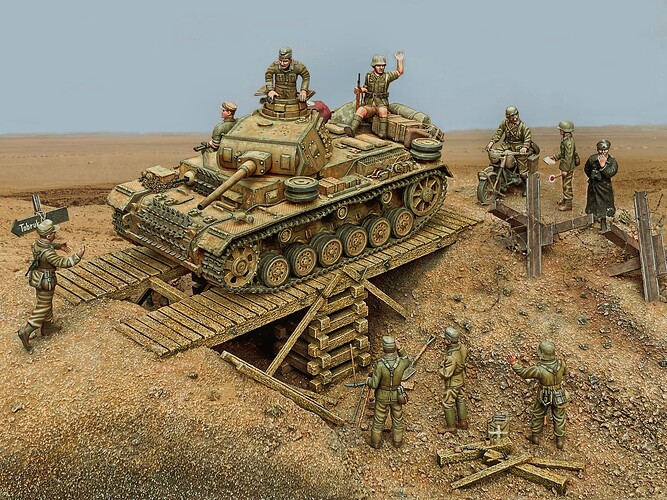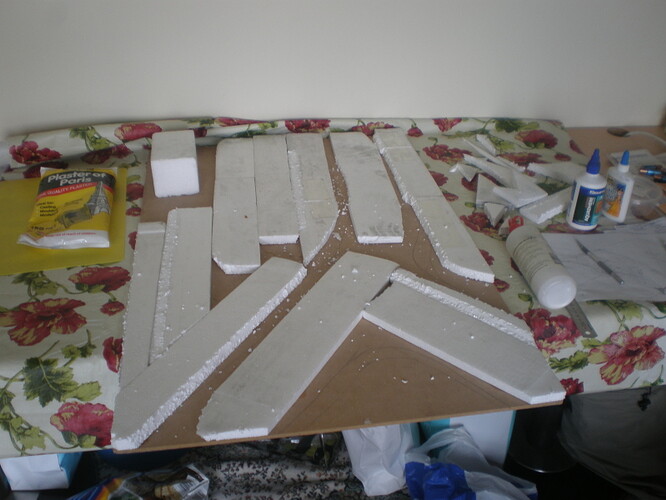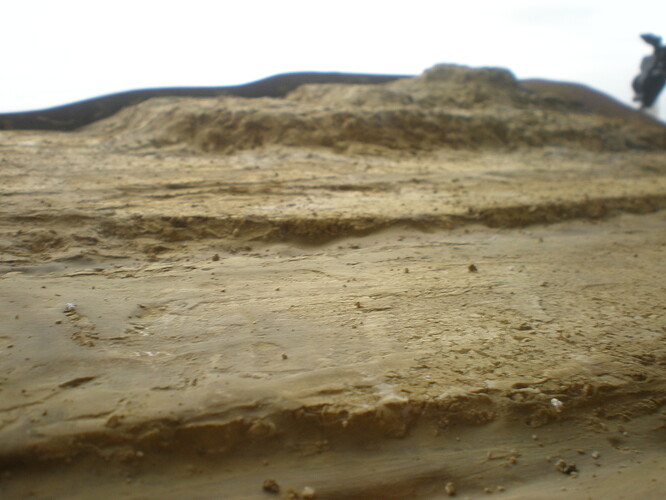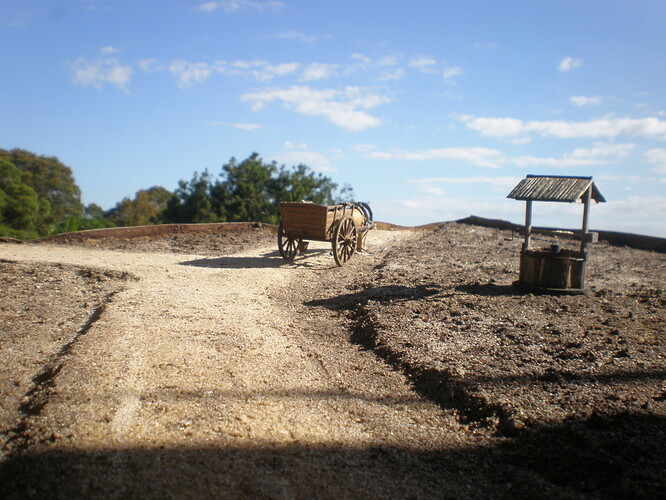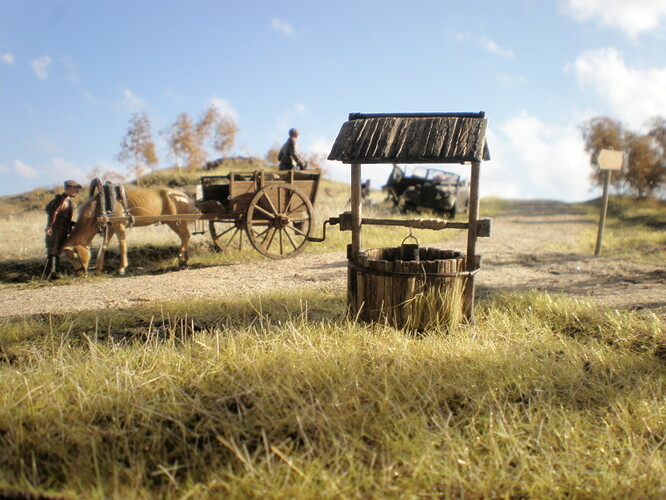I am about to make my first diorama and was curious what the best substance is to create a surface (In my case desert) . . plaster? something else? I am fairly new to diorama building. thanks
something simple to try then I would take a picture frame as base, then a little bit of plaster, wood glue, sand (preferably the colour of what you want to create) and a bit of little rocks. Then put everything together with a bit of water, stir it well. Then put it on the base and shape as required and voila (just wait till dry ![]() )
)
My Advance on Tobruk diorama is built on a picture frame, the substructure is Styrofoam cut and shaped to the rough contours. It is then covered with plaster bandage, (cheesecloth covered with plaster) that you simply wet and apply. A thin coat of plaster is then applied to fill the pores of the bandage. A base coat of sand-colored acrylic paint hides the white plaster. Finishing is done with a mix of orange-yellow beach sand and small rocks, glued with thinned white glue. Assorted washes, dry brushing with oils and dusting with pastel chalks finishes the job.
Great job! Thanks for the tips.
The “plaster cloth”, (I call it bandage because it’s the same stuff doctors used to make casts for broken bones) is available from Woodland Scenics and other manufacturers, can be found in most any craft store or online model train shop. If you want more texture in the finished model, you can cover it with Celluclay or similar products and texture it with a stiff brush or other tools. I also use Woodland Scenics rubber casting molds for making rock outcrops and incorporate them into the base.
The advantages of using this technique is that you can use it to build dioramas of any size. This is the preferred method used by most model railroad buffs for entire layouts. I have used it for professional museum displays as well. It is very durable, lightweight, quick drying and can be easily modified and patched even after finishing.
maybe addressing the title than the question - but the “preferred method” would be to have a story you want to tell.
the mechanics of ‘how’ will fall into place.
Welcome to the forum Keith. So many ways to make a dio base, some depend on the intended topography - for your desert scene I assume it’ll be relatively flat (?). My example’s not exactly that, but maybe the principles might help – standard plywood base, styro packaging fixed with white glue to build up landscaping…
To make the basic landscape I used ordinary plaster & then filler (paste) smeared on with a palette knife fairly thinly to keep the weight down and minimise chances of cracking. When dry, I sieved a bucket of garden soil and mixed a small amount of it with a thickish sludge of ordinary kids’ powder-paint to add colour/texture, applied with a medium sized brush…
That might be all you need for a desert. My dio was set in Russia so needed more work. I added further layers of soil mixed with 50/50 white glue/water & smeared that sludge on non-uniformly to make the final terrain - it doesn’t go glossy provided the mix is right, needs experimentation first…
Lastly I got some real sand to make various blends/shades with the darker sieved soil, sprinkled (dry) onto the semi-dried surface & rubbed it in with a finger. Obviously the more sand in the mix, the lighter the result.
Then there’s grass, but that’s another story you probably don’t need (?)…
Whatever methods you use, wherever possible try each step either on a small patch or on a separate scrap first especially if you’re experimenting. ![]()
Yeah I am thinking it will be flat and sandy. I’m sure there will be a trial and error period. Thanks for the great info. This will help.
I always use toiletpaper soaked in diluted PVA glue, very very cheap and very very light weight…
My preferred material has always been Celluclay - pre-colored with cheapo acrylic paints, and some white glue added for strength. Celluclay, applied more than 1/4 inch in depth, takes forever to dry, so if my terrain is going to be undulating, I glue carved chunks of styrofoam to the base first, then cover with a thin layer of Celluclay mixture. I use a particular brand of kitty-litter for small rocks and stones, but a good substitute is colored plaster poured into a tray, when hard smash up into lots of bits and pieces.
![]()
![]()
